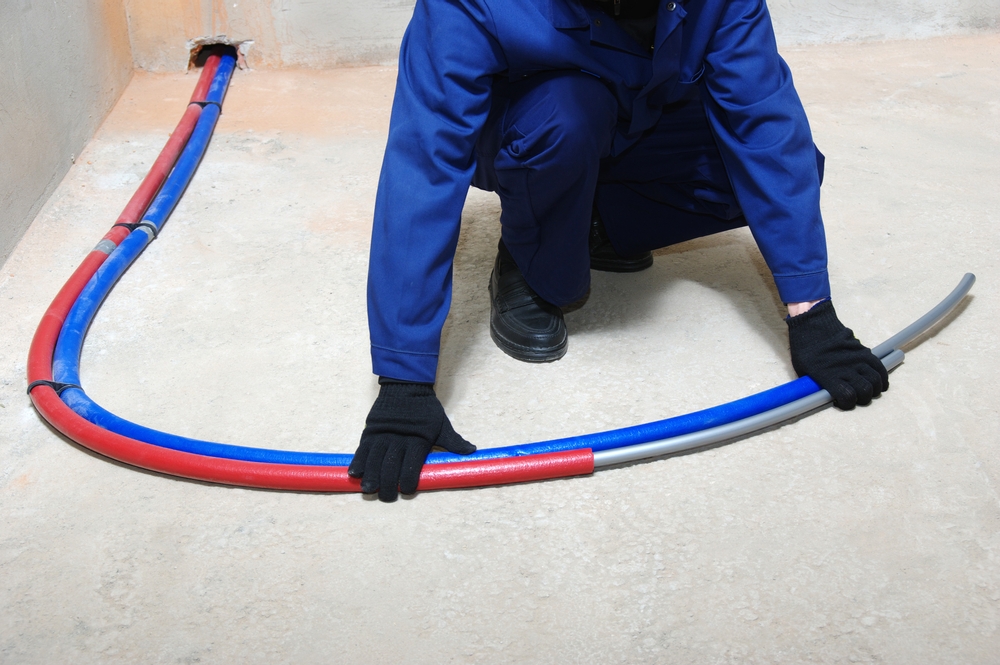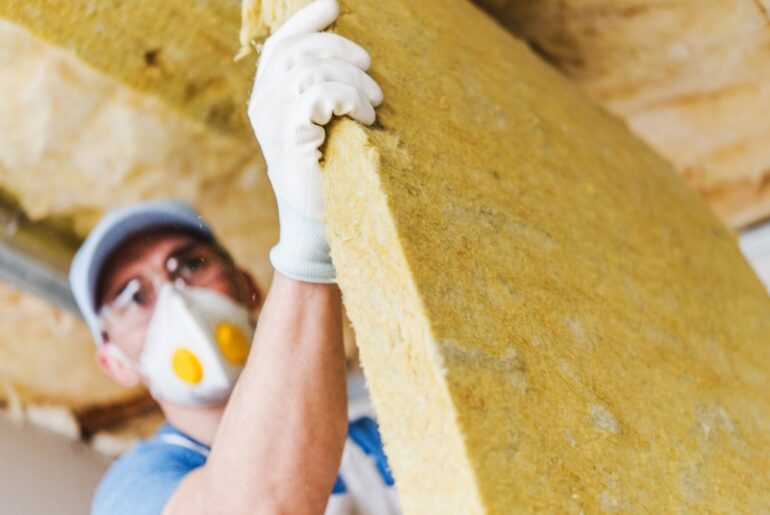PEX tubing pipe is a modern form of residential plumbing pipe made from polyethylene that is both durable and very resistant to damage from freezing. As with any pipe containing fresh water, however, PEX should be insulated for maximum performance.
PEX is not as much a pipe as it is a tube. PEX is available in several configurations, but all PEX is available as a roll, hence the name tubing. PEX can be used for any household water supply and avoids most of the joints created when using copper or PVC pipes.
One of the many benefits of PEX is its resistance to damage when the water inside is allowed to freeze. Copper, galvanized steel, and PVC will burst easily when the water inside the pipe expands, but PEX will actually flex instead of bursting, preventing broken pipes.
Although PEX is very resistant to bursting, you will still be without water if the PEX freezes. Here we will discuss the importance of insulating PEX tubing (pipe) and the most effective ways to do it.
What Is the Best Insulation For PEX Tubing Pipe?
PEX tubing pipe can be purchased pre-insulated, or the insulation can be insulated after the tubing has been installed. The most cost-effective of the two options will be the pre-insulated PEX because it will save labor and time. In most situations, however, homeowners will need to insulate PEX after it has been installed.
Pre-Insulated PEX
Pre-insulated PEX, like this one, includes a foil-backed foam wrap encased in a durable outer jacket. The space between the outer jacket and the foam wrap acts as an additional thermal barrier, allowing only about 1% of the heat to escape.
Pre-insulated PEX is best when you are installing the system for the first time or adding a new zone to your system. Kitchen remodels and bathroom additions are perfect for pre-insulated PEX.
Polyethylene Foam Insulation
Polyethylene foam pipe insulation usually contains a slot cut down the center to allow it to slide over an installed pipe already installed. Polyethylene foam insulation is often sold in lengths of 36” and provides an insulation value of about R-3.
Polyethylene foam insulation is available in 3/8” to 6” sizes to match the diameter of the PEX tubing. Most versions include a self-adhesive strip to secure the insulation, while others need insulating tape to cover the seam.
Continuous Coil Pipe Insulation
Continuous coil pipe insulation installs much like polyethylene foam, but is available in much longer lengths. One huge advantage PEX tubing has over other forms of piping is its flexibility and lack of joints that could potentially fail.
Because continuous coil pipe insulation is available in even greater lengths than the tubing itself, it can be installed with the fewest number of seams. Continuous coil pipe insulation is usually sealed with a self-sealing tab or insulating tape.
Expanding Spray Foam Insulation
Open cell spray foam is the kind you buy in a can, while closed cell spray foam is usually for whole-house spray foam installations, and is installed using a kit. Closed cell foam is denser than open cell spray foam and only expands about ⅓ as much as open cell.
What Is Oxygen Barrier PEX?
Oxygen barrier PEX is a form of PEX tubing that includes a barrier to prevent oxygen from entering the water through the surface of the tubing. Most oxygen barrier PEX forms this barrier with a resin between the inner and outer surfaces.
Most commercial applications of PEX require oxygen barrier PEX, but residential homes can use it too. Oxygen barrier PEX is designed to make your system last longer by reducing the corrosion of metallic parts inside the system, like valves, shutoffs, and pressure reducers.
Oxygen barrier PEX is also standard when using PEX pipe for radiant heat, like in a hydronic radiant floor heating system. Hydronic floor heating systems employ oxygen barrier PEX tubing under a concrete pad to circulate heated water or air, which radiates up through the pad.
Can I Use Spray Foam Insulation On PEX Tubing Pipes?
Spray foam insulation is generally fine used as PEX tubing pipe insulation. Some homeowners are concerned that the spray foam insulation can expand too much and crush the PEX tubing after it dries, or that the spray foam will cause the tubing to overheat and melt.
PEX Tubing Pipe Is Strong
PEX tubing pipe is strong enough to resist the expansion pressure from both open and closed-cell spray foam insulation. Although spray foam insulation will adhere permanently to PEX tubing, it will not damage or weaken the outer surface.
Pro Tip
Although the spray foam insulation will not harm PEX tubing, trying to remove it from PEX tubing might damage the outer covering. Never use an acetone-based cleaner (like Goof Off) to remove spray foam from PEX tubing. The acetone can weaken the polyethylene, causing the PEX to fail.
Neither the PEX nor Spray Foam Insulation Will Melt
Another common concern among homeowners is that spray foam insulation will cause the hot water in PEX tubing to become too hot and melt the tubing. Most PEX brands can withstand temperatures up to 200 F and as low as 20 F before performance is affected.
Of course, this is what makes spray foam such an effective insulator for PEX. Water heaters are designed to prevent water from overheating, so there is little to no possibility the spray foam, nor the PEX tubing, could become hot enough to melt.
Even if a water heater thermostat fails and the water overheats, the water will turn to steam and escape through the safety valve on the water heater. The thermostat on most residential water heaters maxes out at about 150 degrees, so there is no danger to the PEX or the spray foam.
To be clear, you should never install spray foam insulation on any surface that becomes hot enough to ignite combustible material. Furnaces and electric heating elements should not be insulated with spray foam. Both the tubing and the insulation will emit toxic smoke if they come into contact with an open flame.
Will PEX Pipe Freeze and Burst Without Insulation?
Most brands (if not all) of PEX tubing will not freeze and burst due to normal winter temperatures. One of the great features of PEX tubing is that it flexes instead of rupturing when ice forms inside the tubing.
When a pipe bursts due to ice formation, the water has expanded beyond the limits of the pipe. Rigid pipe, like copper, galvanized steel, and cpvc will burst when the volume of ice exceeds the space inside the pipe. Most PEX brands can stretch as much as three times their diameter, so it rarely fails due to freezing.
If Pex Will Not Burst, Why Insulate it?
If the water freezes in your PEX tubing, you will have no water supply to the home. Insulating your PEX will help prevent damage to other metallic components, like the pressure reducer, recirculation pump, and outdoor spigots.
Can I Use Fiberglass Batts or Heat Cable to Insulate PEX Tubing Pipe?
You can use fiberglass pulled from a batt, electric heat tape, or both to insulate PEX. However, you must be careful to not flatten the fiberglass when securing it with tape. Wrap the fiberglass loosely around the pipe and secure it with insulating tape for the best results.
In very cold climates, electric heat cables can provide just enough heat to prevent the formation of ice inside the PEX. Heat cables are often taped into place along the PEX, along with fiberglass insulation. Heat cables contain a thermostat, so insulating them will make them work less and last longer.





